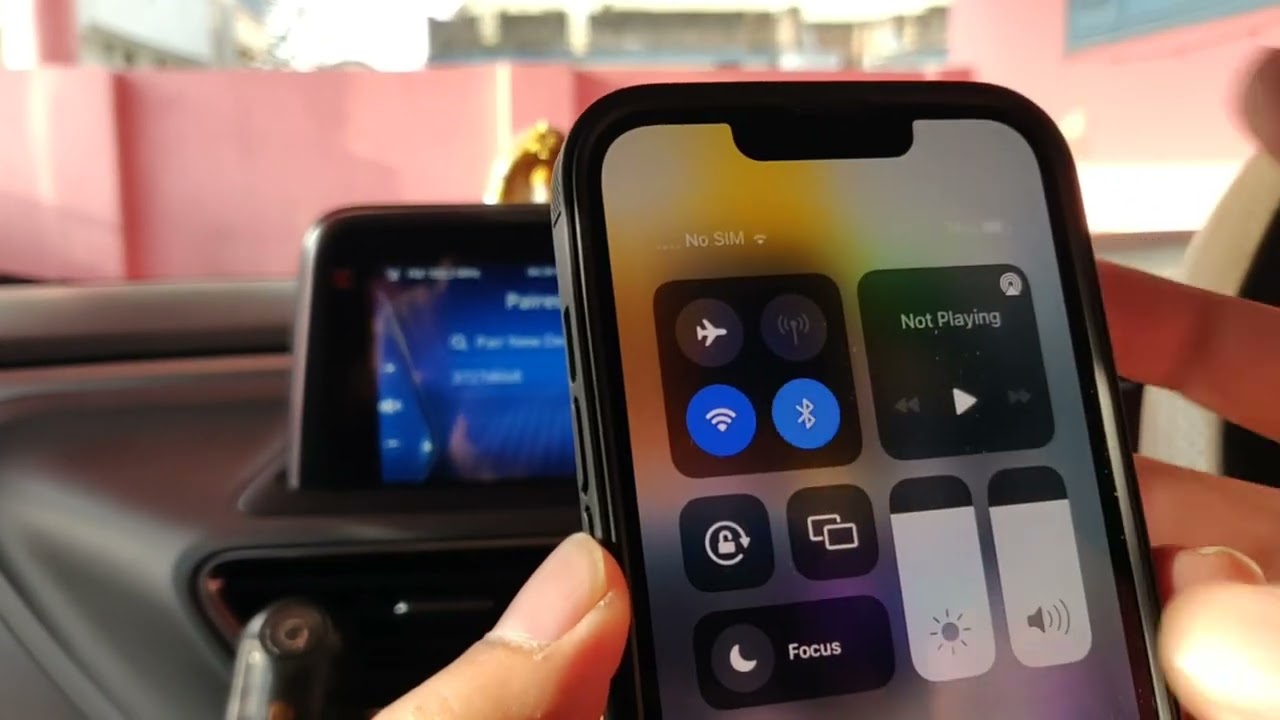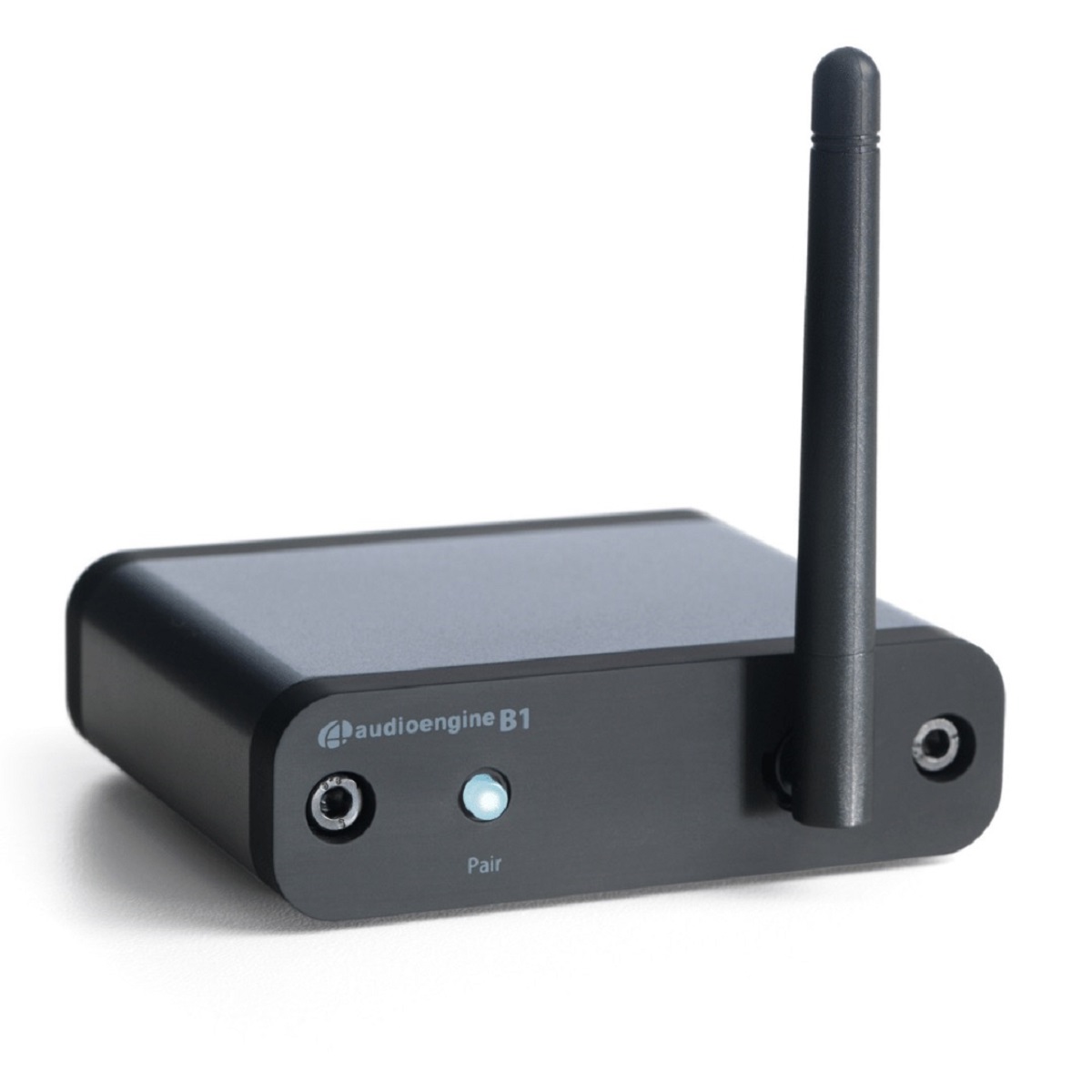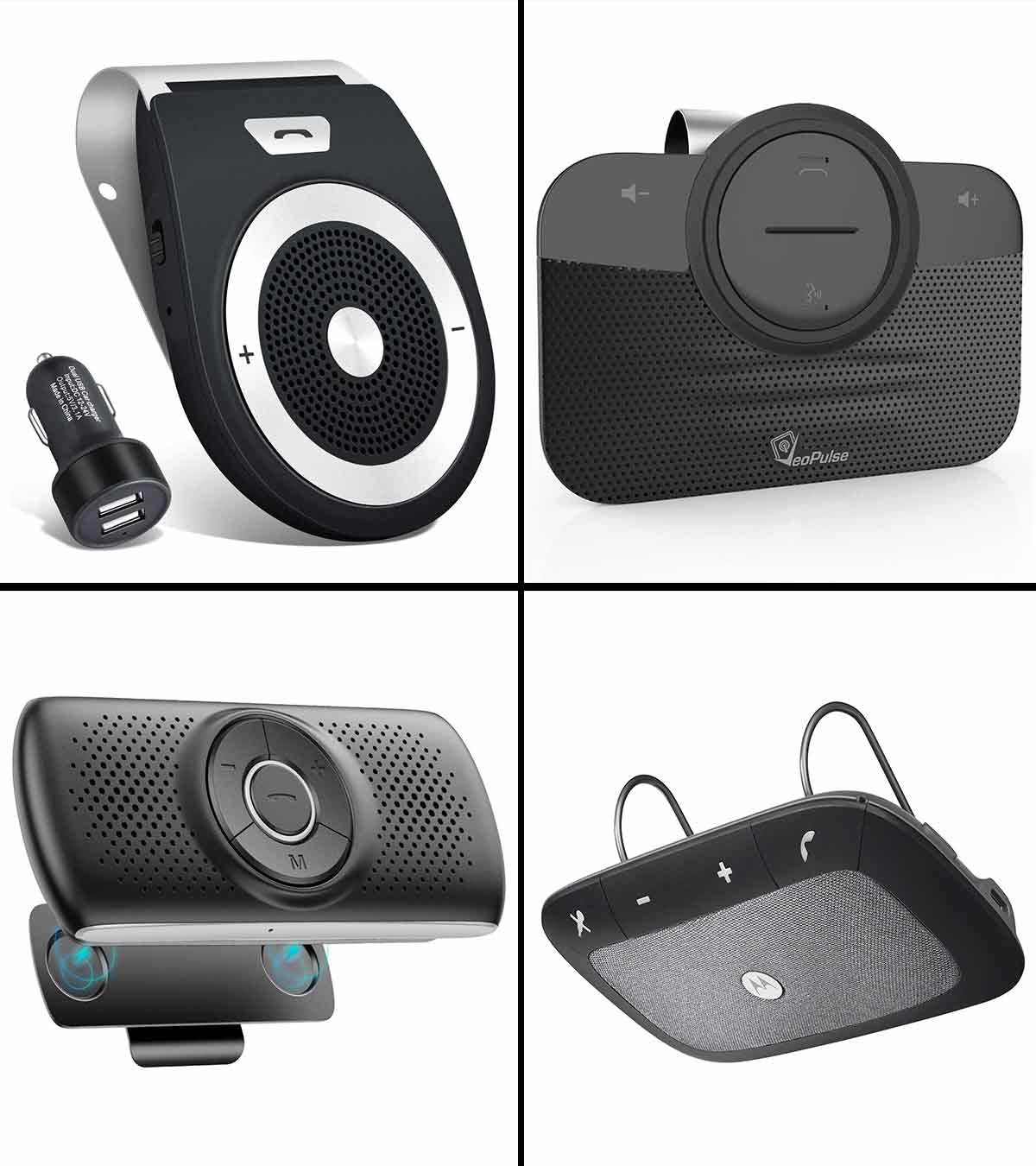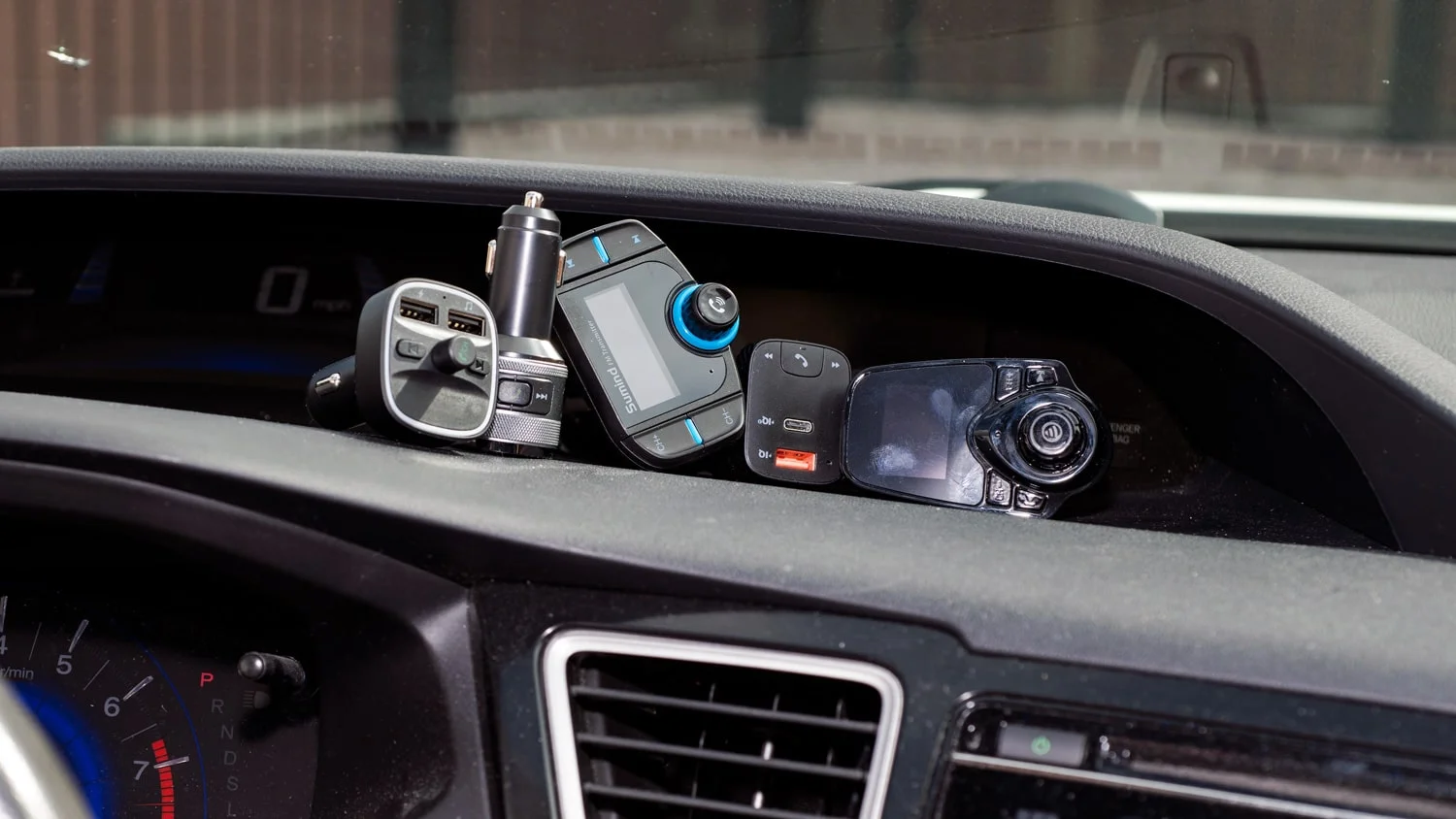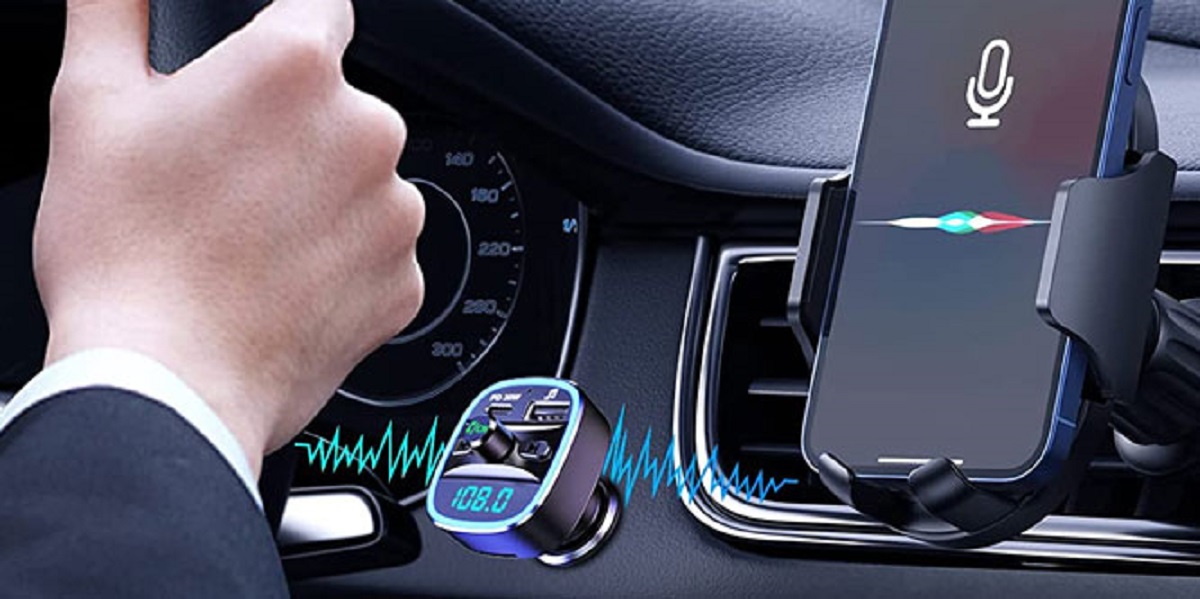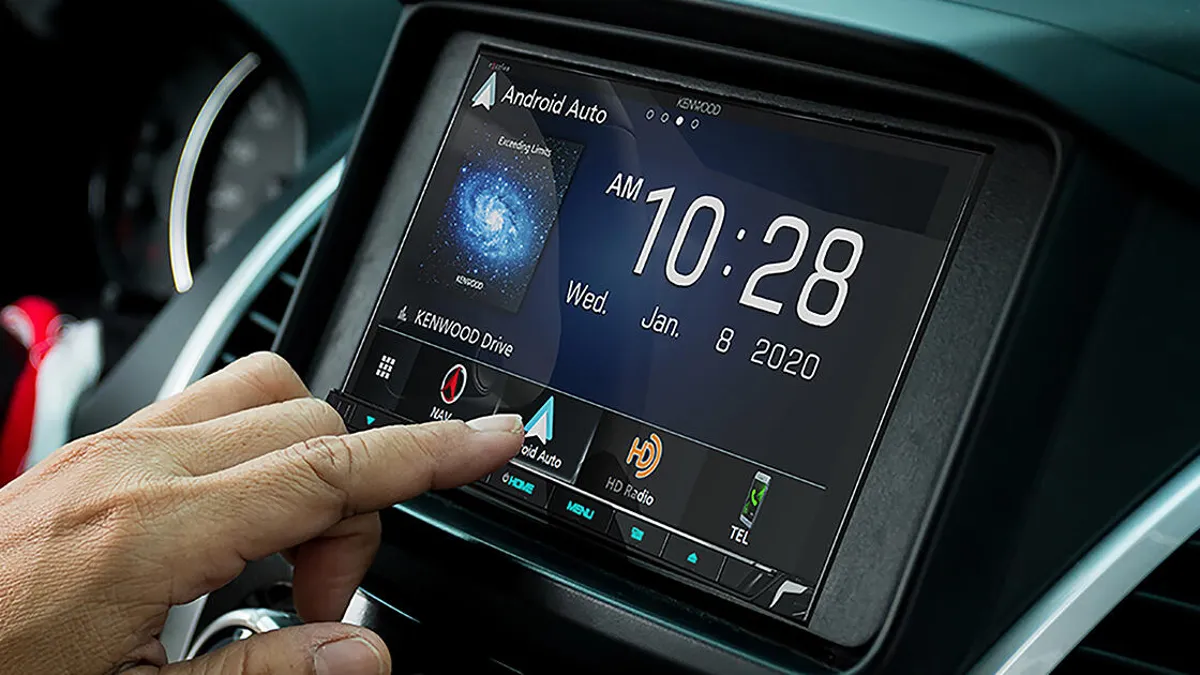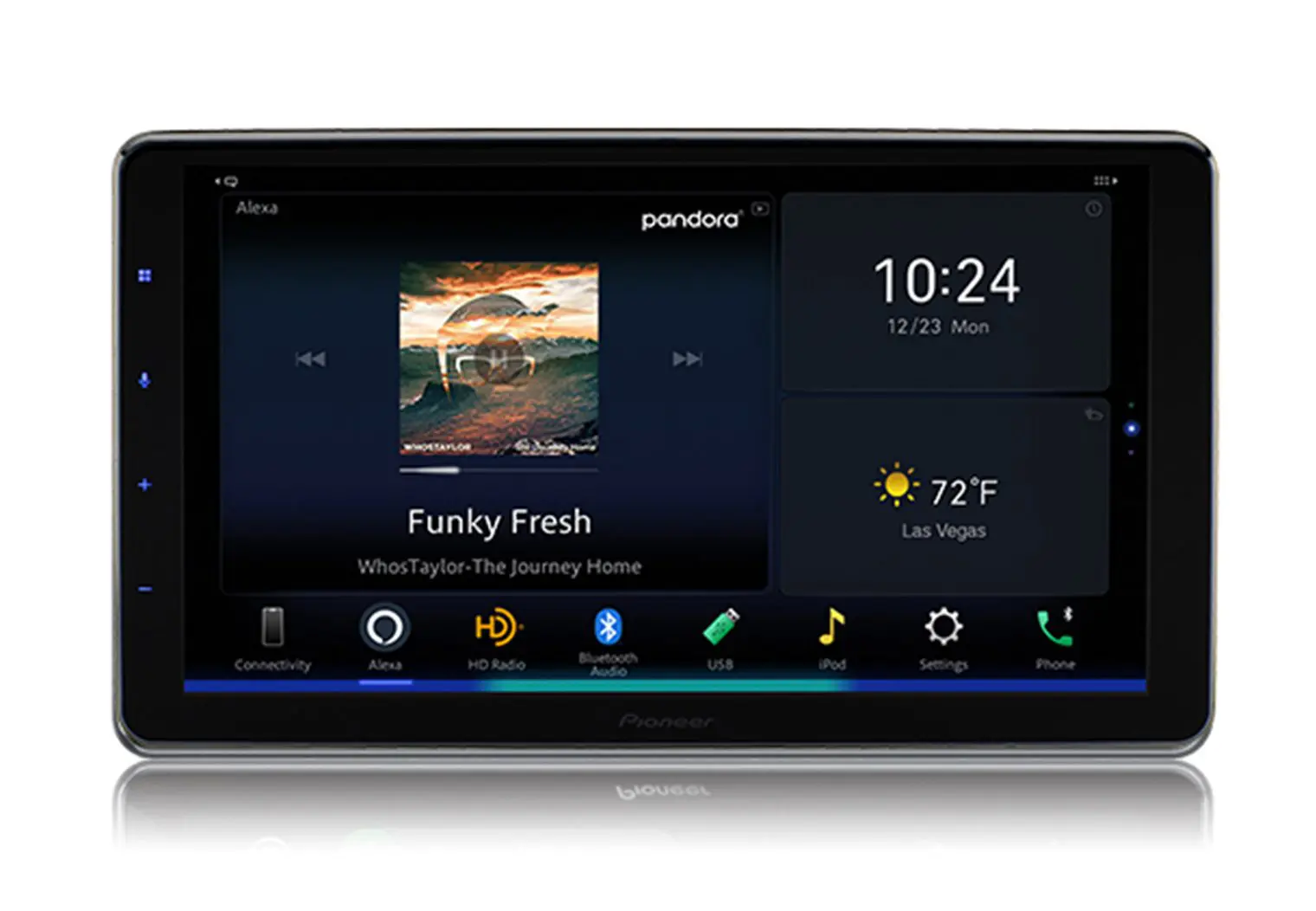Introduction
Welcome to the digital age, where connectivity is king. It’s no secret that having Bluetooth technology in your car can greatly enhance your driving experience. Whether you want to make hands-free calls, stream music wirelessly, or use navigation apps seamlessly, adding Bluetooth to your car is a smart move.
Gone are the days of messy wires and fumbling with your phone while behind the wheel. With Bluetooth, you can stay connected and keep your focus on the road. But you may be wondering, how exactly do you add Bluetooth to your car? Well, you’ve come to the right place!
In this guide, we will explore the various benefits of adding Bluetooth to your car and the different options available to you. We will provide you with step-by-step instructions on how to install Bluetooth connectivity in your car, ensuring that you can enjoy the convenience and safety it brings.
But before we dive into the nitty-gritty of installation, let’s take a moment to appreciate why adding Bluetooth to your car is a game-changer.
Imagine being able to answer calls without having to reach for your phone or fumbling with tangled earphones. Picture yourself effortlessly streaming your favorite tunes from your phone’s music library. Envision having instant access to your navigation apps, following turn-by-turn directions without distraction. These are just a few of the incredible benefits that Bluetooth integration can offer.
Not only does Bluetooth make your drive more enjoyable and convenient, but it also enhances safety. Hands-free calling allows you to keep your focus on the road, reducing the risk of accidents caused by distracted driving. With Bluetooth, you can keep your hands on the wheel and your eyes on the road, ensuring a smooth and safe journey.
Now that we’ve established the numerous advantages of adding Bluetooth to your car, let’s explore the different options available to you. Whether you prefer retrofitting your car’s stereo system, using a Bluetooth FM transmitter, or installing a dedicated Bluetooth car kit, there’s a solution that will suit your needs and budget.
So, buckle up and get ready to bring the power of Bluetooth into your car! In the following sections, we will walk you through each option and provide you with a step-by-step guide to successfully add Bluetooth connectivity to your car.
Benefits of Adding Bluetooth to Your Car
Adding Bluetooth to your car can revolutionize your driving experience in more ways than you can imagine. Here are some of the key benefits that come with integrating Bluetooth technology into your vehicle:
- Hands-Free Calling: One of the biggest advantages of having Bluetooth in your car is the ability to make and receive calls without taking your hands off the wheel. With a Bluetooth-enabled car, you can answer calls, make calls, and even send text messages using voice commands, keeping you focused on the road and reducing the risk of accidents.
- Wireless Music Streaming: Tired of dealing with tangled cables or relying on outdated CD players? Bluetooth allows you to stream music wirelessly from your smartphone or other devices directly to your car’s audio system. Say goodbye to messy wires and hello to uninterrupted music enjoyment.
- Seamless Navigation: With Bluetooth connectivity, you can seamlessly integrate your phone’s navigation apps with your car’s infotainment system. This means you can receive turn-by-turn directions, real-time traffic updates, and even voice-guided navigation, making it easier and safer to navigate unfamiliar roads.
- Enhanced Safety: Bluetooth integration enhances safety by minimizing distractions while driving. With hands-free calling and voice-controlled features, you can keep both hands on the wheel and maintain focus on the road ahead. This reduces the temptation to text or talk on the phone manually, ensuring a safer driving experience.
- Convenience and Comfort: Bluetooth connectivity adds a new level of convenience and comfort to your daily commute or long road trips. You no longer need to search for your phone, plug in cables, or adjust settings to connect it to your car’s audio system. Bluetooth allows for effortless and automatic connections, so you can start enjoying your favorite music or podcast in seconds.
- Compatibility and Versatility: Bluetooth technology is widely available and compatible with most modern smartphones and car audio systems. Whether you have an Android device or an iPhone, you can easily connect it to your car’s Bluetooth system. Additionally, Bluetooth-compatible devices are not limited to just music and calls. You can also connect other Bluetooth-enabled devices like tablets or smartwatches to your car, expanding your options for entertainment and functionality.
By adding Bluetooth to your car, you open up a world of possibilities and improve your overall driving experience. From the convenience of hands-free calling to the joy of wireless music streaming, Bluetooth integration offers a seamless and connected journey.
Now that you’re aware of the benefits, it’s time to explore the options available for adding Bluetooth to your car. Whether you choose to retrofit your car’s stereo system with a Bluetooth adapter, use a Bluetooth FM transmitter, or install a dedicated Bluetooth car kit, we’ve got you covered. Read on to discover the best solution for your needs and learn how to implement it step by step!
Different Options for Adding Bluetooth to Your Car
When it comes to adding Bluetooth connectivity to your car, you have several options to choose from. Each option offers its own advantages and considerations, allowing you to tailor the Bluetooth integration to your specific needs and budget. Here are the three main options available:
- Retrofitting Your Car’s Stereo System with a Bluetooth Adapter: This option is ideal if your car already has a built-in stereo system that lacks Bluetooth functionality. By retrofitting your car’s stereo with a Bluetooth adapter, you can enjoy the benefits of wireless connectivity without having to replace the entire system. Bluetooth adapters can be plugged into the auxiliary input or connect via the FM antenna, providing a seamless and integrated experience.
- Using a Bluetooth FM Transmitter: If your car doesn’t have an auxiliary input or Bluetooth capability, a Bluetooth FM transmitter can be a convenient solution. These compact devices plug into your car’s cigarette lighter socket and connect to your smartphone via Bluetooth. The transmitter then broadcasts the audio signals to an available FM frequency, which can be tuned in on your car’s radio. With this option, you can enjoy wireless music streaming and hands-free calling without any additional installations or modifications.
- Installing a Bluetooth Car Kit: For a more permanent and integrated solution, installing a dedicated Bluetooth car kit is a popular choice. This option involves installing a Bluetooth module directly in your car, usually connected to the existing audio system. Bluetooth car kits typically offer a range of features, including hands-free calling, wireless music streaming, and in some cases, even voice control. Installation may require professional assistance, but it provides a seamless and cohesive Bluetooth experience.
Each option comes with its own set of pros and cons, so it’s important to consider your specific needs and budget before making a decision. Retrofitting your car’s stereo with a Bluetooth adapter is a cost-effective solution, while a Bluetooth FM transmitter offers convenience and portability. On the other hand, installing a Bluetooth car kit provides a fully integrated and permanent Bluetooth solution.
Now that you’re aware of the different options available, it’s time to choose the right Bluetooth solution for your car. In the following sections, we will provide you with step-by-step instructions for each option, ensuring a successful and hassle-free installation process. Whether you opt for retrofitting, an FM transmitter, or a dedicated car kit, you’ll soon enjoy the benefits of Bluetooth connectivity in your car.
Option 1: Retrofitting Your Car’s Stereo System with a Bluetooth Adapter
If your car is equipped with a stereo system that doesn’t have built-in Bluetooth functionality, retrofitting it with a Bluetooth adapter is a fantastic option. This allows you to upgrade your existing system without the need for a complete replacement. Here’s how you can do it:
Step 1: Research and Choose the Right Bluetooth Adapter
Start by researching different Bluetooth adapters available in the market. Look for adapters that are compatible with your car’s make and model, as well as the type of stereo system you have. Read reviews and compare features to find the options that best suit your needs and budget.
Step 2: Gather the Necessary Tools
Before starting the installation, make sure you have all the necessary tools. Generally, you’ll need a screwdriver, wire cutters/strippers, electrical tape, and possibly a panel removal tool. Refer to the instructions provided with your Bluetooth adapter for any specific tools required.
Step 3: Prepare the Car’s Stereo System
Start by turning off the car’s ignition and removing the negative battery cable to prevent any electrical mishaps. Use the appropriate panel removal tool to carefully remove the trim panels surrounding the stereo unit. This will give you access to the stereo system’s wiring and connections.
Step 4: Connect the Bluetooth Adapter
Refer to the instructions provided with your Bluetooth adapter to identify the necessary connections. Typically, the adapter will have audio output wires that need to be connected to the audio input on the stereo system. Follow the color-coding on the wires and make the necessary connections securely using wire cutters/strippers.
Step 5: Test the Connection
Once the connections are made, reconnect the car’s battery cable and test the Bluetooth adapter. Turn on the car’s ignition and pair your phone with the adapter. Make a test call or play some music to ensure that the connection is established and working properly.
Step 6: Reassemble and Enjoy!
If everything is functioning correctly, reassemble the trim panels, ensuring that all clips and screws are properly attached. Double-check that the Bluetooth adapter is securely mounted and continue to enjoy the benefits of Bluetooth connectivity in your car’s stereo system.
With a Bluetooth adapter successfully integrated into your car’s stereo system, you can now enjoy hands-free calling, wireless music streaming, and greater convenience while on the road. This option provides an affordable and effective solution for upgrading your car’s audio capabilities without the need for a complete overhaul.
Now that you’re familiar with retrofitting your car’s stereo system with a Bluetooth adapter, let’s move on to exploring the next option: using a Bluetooth FM transmitter. Read on for detailed instructions and tips to make the most of this convenient Bluetooth solution.
Option 2: Using a Bluetooth FM Transmitter
If your car doesn’t have an auxiliary input or built-in Bluetooth capability, using a Bluetooth FM transmitter is a convenient and portable option to add Bluetooth connectivity. With a Bluetooth FM transmitter, you can wirelessly stream music and make hands-free calls through your car’s FM radio. Here’s how you can set it up:
Step 1: Choose a Suitable Bluetooth FM Transmitter
Start by researching and selecting a Bluetooth FM transmitter that meets your needs and budget. Look for one that has good reviews, reliable connectivity, and a frequency range that suits your region to avoid interference.
Step 2: Plug in the Transmitter
Plug the Bluetooth FM transmitter into your car’s cigarette lighter socket (also known as the 12V socket). The transmitter will be powered by this socket and ready for pairing with your smartphone.
Step 3: Pair with Your Smartphone
Go to the Bluetooth settings on your smartphone and turn on Bluetooth. Look for the transmitter’s name in the list of available devices and select it to pair. Once successfully paired, the transmitter will be ready to transmit audio from your phone to your car’s FM radio.
Step 4: Tune Your Radio and FM Frequency
Set your car’s FM radio to an empty frequency that is not used by any existing radio stations in your area. This will ensure minimal interference and optimal sound quality. Set the Bluetooth FM transmitter to the same frequency by using the controls or buttons on the device.
Step 5: Play Music or Make Calls
Once the FM frequency is set, you can start streaming music from your phone or make hands-free calls through your car’s audio system. The audio from your phone will be transmitted wirelessly to your car’s FM radio, giving you a convenient and seamless experience.
Step 6: Adjust and Enjoy
Adjust the volume levels on both the Bluetooth FM transmitter and your car’s audio system to find the ideal sound balance. Sit back, relax, and enjoy the wireless music streaming and hands-free calling features that come with the Bluetooth FM transmitter.
Using a Bluetooth FM transmitter offers a portable and hassle-free way to add Bluetooth functionality to your car. It allows you to enjoy the benefits of wireless music streaming and hands-free calling without the need for complex installations or modifications.
With your Bluetooth FM transmitter successfully set up, you can now stream your favorite music and make calls safely and conveniently while on the road. Let’s move on to the final option: installing a dedicated Bluetooth car kit, which provides an integrated and permanent Bluetooth solution. Read on to learn more!
Option 3: Installing a Bluetooth Car Kit
If you’re looking for a more permanent and integrated Bluetooth solution for your car, installing a dedicated Bluetooth car kit is the way to go. A Bluetooth car kit offers a range of features, including hands-free calling, wireless music streaming, and even voice control. Here’s how you can install a Bluetooth car kit:
Step 1: Choose the Right Bluetooth Car Kit
Research and choose a Bluetooth car kit that fits your requirements and is compatible with your car. Consider factors such as installation complexity, features, and cost. Read reviews and user feedback to ensure you make an informed decision.
Step 2: Gather the Necessary Tools
Make sure you have all the necessary tools before starting the installation. Depending on the specific car kit, you may need tools such as a screwdriver, wire strippers, electrical tape, and trim removal tools. Refer to the instructions provided with your Bluetooth car kit for any specific tool requirements.
Step 3: Prepare the Car’s Dashboard
Begin by turning off the car’s ignition and disconnecting the negative battery cable to prevent any electrical mishaps. Carefully remove the necessary panels or trim pieces from your car’s dashboard to gain access to the stereo and wiring area. Follow the manufacturer’s instructions for the proper removal process.
Step 4: Install the Bluetooth Car Kit
With the dashboard prepared, follow the instructions provided with your Bluetooth car kit to install it correctly. This typically involves connecting the kit’s wiring harness to your car’s stereo system, power source, and speakers. Securely fasten the car kit in place, ensuring that all connections are properly connected and insulated.
Step 5: Pair Your Phone and Test the Bluetooth Connection
After installation, reconnect the car’s battery cable and turn on the car’s ignition. Follow the instructions provided with the Bluetooth car kit to pair your phone and test the connection. Ensure that you can make hands-free calls, stream music, and utilize any additional features offered by the car kit.
Step 6: Reassemble and Enjoy
If everything is functioning correctly, reassemble the removed panels or trim pieces, making sure that they are properly fitted and secured. Double-check that the Bluetooth car kit is securely attached and ready for use. Now, you can enjoy the convenience and features of integrated Bluetooth connectivity in your car.
Installing a dedicated Bluetooth car kit provides a comprehensive and permanent solution for adding Bluetooth functionality to your car. With hands-free calling, wireless music streaming, and other convenient features, you’ll have a seamless Bluetooth experience whenever you’re on the road.
Now that you have learned about the three options for adding Bluetooth to your car, which include retrofitting your car’s stereo system with a Bluetooth adapter, using a Bluetooth FM transmitter, or installing a dedicated Bluetooth car kit, you can choose the best option that suits your needs and budget. In the next section, we will guide you through a step-by-step process for adding Bluetooth to your car, regardless of the option you have chosen. Let’s get started!
Step-by-Step Guide: Adding Bluetooth to Your Car
Regardless of the option you choose – retrofitting your car’s stereo system, using a Bluetooth FM transmitter, or installing a dedicated Bluetooth car kit – the following step-by-step guide will help you successfully add Bluetooth connectivity to your car.
Step 1: Determine Your Car’s Compatibility with Bluetooth
Check if your car already has Bluetooth capability or if it can be upgraded to support Bluetooth. Look for Bluetooth logos or check your car’s manual or manufacturer’s website for compatibility information.
Step 2: Choose the Right Bluetooth Solution for Your Car
Based on your car’s compatibility and your preferences, select the option that best suits your needs: retrofitting, an FM transmitter, or a dedicated car kit.
Step 3: Prepare for Installation
Gather all the necessary tools and equipment as per the selected option. Carefully read the instructions provided by the manufacturer to familiarize yourself with the installation process.
Step 4: Install the Bluetooth Adapter/FM Transmitter/Car Kit
Follow the specific installation instructions for your chosen Bluetooth solution. This may involve removing trim panels, making wiring connections, or mounting the device securely in the car.
Step 5: Pairing and Connecting Your Phone to the Car’s Bluetooth
Turn on Bluetooth on your phone and put it in pairing mode. Follow the instructions provided with your chosen Bluetooth solution to pair and connect your phone to your car’s Bluetooth system.
Step 6: Enjoy the Benefits of Bluetooth Connectivity in Your Car
Once your phone is successfully connected to your car’s Bluetooth system, you can start enjoying the benefits. Make hands-free phone calls, stream music wirelessly, and take advantage of other Bluetooth features available to enhance your driving experience.
Remember, each option may have specific variations in the installation process, so it’s essential to carefully follow the instructions provided by the manufacturer of your chosen Bluetooth solution. If you encounter any difficulties or have questions, consult the user manual or seek professional assistance.
With Bluetooth now integrated into your car, you can stay connected, enjoy seamless music streaming, and drive safely. Take advantage of the convenience and safety that Bluetooth technology offers, and transform your driving experience in the modern digital age.
Next, we will share some useful tips for troubleshooting and maintenance to ensure a continued smooth Bluetooth experience in your car. Keep reading to learn more!
Step 1: Determine Your Car’s Compatibility with Bluetooth
Before you embark on adding Bluetooth to your car, it’s important to determine if your vehicle is already equipped with Bluetooth capability or if it can be upgraded to support Bluetooth. Here’s how you can check your car’s compatibility:
Check for Bluetooth Logos and Badges:
Inspect your car’s interior and exterior for Bluetooth logos or badges. These can usually be found on the stereo unit, steering wheel, or audio control panel. These logos indicate that your car has Bluetooth capability.
Consult Your Car’s Manual:
Refer to your car’s manual or documentation. Look for information about the audio system and technology features. Check if Bluetooth is mentioned as a supported feature or if there are any optional Bluetooth upgrades available for your car’s make and model.
Visit the Manufacturer’s Website:
Visit the official website of your car’s manufacturer. Look for a section dedicated to your specific car model or search for Bluetooth compatibility information. Manufacturers often provide detailed information about the technology features available in their cars.
Contact Customer Support:
If you’re still uncertain about your car’s Bluetooth compatibility or if you couldn’t find the information you needed, consider reaching out to the customer support of your car’s manufacturer. They can provide you with accurate and up-to-date information regarding your car’s Bluetooth capabilities.
Once you have determined whether your car has Bluetooth or can be upgraded to support Bluetooth, you will have a better understanding of the options available to you for adding Bluetooth connectivity. If your car is already Bluetooth-enabled, you may only need to pair your phone with the existing system. If not, you can explore retrofitting options or use external Bluetooth devices like FM transmitters or car kits to add Bluetooth functionality to your car.
By taking the time to determine your car’s Bluetooth compatibility, you can ensure that you choose the most suitable option for adding Bluetooth to your car and enjoy the benefits of wireless technology while on the road.
Next, we will delve into the various options available for adding Bluetooth to your car. Keep reading to discover the different paths you can take to enhance your car’s connectivity!
Step 2: Choose the Right Bluetooth Solution for Your Car
Once you’ve determined your car’s compatibility with Bluetooth technology, it’s time to choose the right Bluetooth solution that best suits your needs. Depending on your car’s existing setup and your preferences, you have several options to consider. Here’s how you can choose the right Bluetooth solution for your car:
Evaluate Your Car’s Current Configuration:
Take a close look at your car’s audio system and connectivity options. Determine whether your car’s stereo system already has Bluetooth functionality or if it has an auxiliary input or USB port that can be utilized for connecting external Bluetooth devices. Identifying your car’s current configuration will help you understand which Bluetooth solution is most suitable.
Consider Your Preferred Features:
Think about the features that are important to you when it comes to integrating Bluetooth into your car. Do you prioritize hands-free calling, wireless music streaming, or voice control? Consider the features that you would benefit from the most and prioritize them in your decision-making process.
Research Different Bluetooth Solutions:
Explore the various Bluetooth solutions available for your specific car model. These can include retrofitting options, Bluetooth FM transmitters, or dedicated Bluetooth car kits. Research the pros and cons of each option, read customer reviews, and compare prices to make an informed decision.
Weigh the Installation Complexity:
Consider the level of installation complexity that you are comfortable with. Retrofitting a car’s stereo system with a Bluetooth adapter may require some technical expertise, while using a Bluetooth FM transmitter or installing a car kit can be relatively simpler. Assess your own skills and confidence to choose the option that aligns with your installation capabilities.
Set a Budget:
Establish a budget for adding Bluetooth to your car. The cost of Bluetooth solutions can vary depending on the option you choose. Retrofitting your car’s stereo system with a Bluetooth adapter is usually more affordable, while dedicated car kits may be more expensive. Determine how much you are willing to invest in adding Bluetooth functionality to your car.
By evaluating your car’s current configuration, considering your preferred features, researching different Bluetooth solutions, weighing the installation complexity, and setting a budget, you can choose the right Bluetooth solution that caters to your unique needs and requirements.
In the next step, we will guide you through the preparation process before installing your chosen Bluetooth solution. Stay tuned to ensure a smooth and successful installation!
Step 3: Prepare for Installation
Before you begin the installation process for adding Bluetooth to your car, it’s essential to properly prepare for the task at hand. This will ensure that you have all the necessary tools and information needed to complete the installation smoothly. Here’s how you can prepare for the installation:
Gather the Required Tools:
Review the instructions provided by the manufacturer of your chosen Bluetooth solution. Take note of the tools and equipment mentioned that are necessary for the installation. Common tools may include screwdrivers, wire cutters/strippers, electrical tape, and panel removal tools. Gather all the required tools in advance to have them readily available during the installation process.
Read the Manufacturer’s Instructions:
Thoroughly read and understand the instructions provided by the manufacturer of your chosen Bluetooth solution. Familiarize yourself with the step-by-step installation process, as well as any specific requirements or precautions outlined in the instructions. This will ensure that you are well-informed and prepared for each stage of the installation.
Identify and Locate Connection Points:
Examine your car’s stereo system or audio setup and identify the connection points necessary for the installation. This may include the auxiliary input, USB port, FM antenna, or specific wiring connections. Depending on the Bluetooth solution you have chosen, understanding the location and accessibility of these connection points will make the installation process smoother and more efficient.
Ensure a Safe and Clean Work Environment:
Before starting the installation, make sure you have a safe and clean work environment. This includes ensuring adequate lighting, a clutter-free space, and a grounded work area. Removing any potential hazards or distractions will help you focus on the installation process and minimize the risk of accidents or errors.
Take Precautions with Electrical Components:
Since you will be working with electrical components during the installation, it’s crucial to take the necessary precautions to prevent electrical damage or injury. Ensure that the car’s ignition is turned off and the negative battery cable is disconnected before beginning the installation. This will help avoid any electrical mishaps during the process.
By gathering the required tools, carefully reading the manufacturer’s instructions, identifying connection points, preparing a safe work environment, and taking necessary electrical precautions, you will be fully prepared for the installation process. This level of preparation will help ensure a smooth and successful integration of Bluetooth into your car.
In the next step, we will guide you through the installation process specific to your chosen Bluetooth solution. Stay tuned to learn the step-by-step instructions for each option!
Step 4: Install the Bluetooth Adapter/FM Transmitter/Car Kit
Now that you have prepared for the installation, it’s time to install your chosen Bluetooth solution – whether it’s a Bluetooth adapter, FM transmitter, or dedicated car kit. Follow the step-by-step instructions below to ensure a successful installation:
Bluetooth Adapter:
- Start by turning off the car’s ignition and disconnecting the negative battery cable as a safety precaution.
- Carefully remove any necessary trim panels or covers that provide access to the car’s stereo system.
- Identify the auxiliary input or other suitable connection point in your car’s stereo system for the Bluetooth adapter.
- Connect the Bluetooth adapter’s audio output to the car’s stereo system via the designated port using the appropriate cables.
- Securely fasten the Bluetooth adapter in place and ensure that all connections are tight and secure.
- Reassemble the trim panels or covers that were removed earlier, making sure they are properly aligned and fastened.
- Reconnect the negative battery cable and turn on the car’s ignition to test the connection.
- Pair your phone with the Bluetooth adapter and test the functionality by making a phone call or playing music.
Bluetooth FM Transmitter:
- Start by turning off the car’s ignition and disconnecting the negative battery cable as a safety precaution.
- Locate the car’s cigarette lighter socket or 12V socket where the Bluetooth FM transmitter will be connected.
- Insert the Bluetooth FM transmitter into the cigarette lighter socket until it is securely in place.
- Turn on the car’s ignition and set your car’s FM radio to an empty frequency that is not being used by any existing radio stations.
- Set the Bluetooth FM transmitter to the same FM frequency by using the controls or buttons on the device.
- Pair your phone with the Bluetooth FM transmitter by enabling Bluetooth on your phone and following the instructions provided with the transmitter.
- Test the functionality by making a phone call or playing music through your car’s FM radio.
Dedicated Bluetooth Car Kit:
- Start by turning off the car’s ignition and disconnecting the negative battery cable as a safety precaution.
- Identify a suitable location in your car for the dedicated Bluetooth car kit. This may involve removing trim panels or covers.
- Connect the car kit’s wiring harness to the car’s stereo system, power source, and speakers following the manufacturer’s instructions.
- Mount the Bluetooth car kit securely in the chosen location using the provided brackets or mounting materials.
- Reassemble the trim panels or covers that were removed earlier, ensuring they are properly aligned and securely fastened.
- Reconnect the negative battery cable and turn on the car’s ignition to test the connection.
- Pair your phone with the Bluetooth car kit following the instructions provided by the manufacturer.
- Test the functionality by making a phone call or playing music through your car’s audio system.
Make sure to carefully follow the specific instructions provided by the manufacturer of your chosen Bluetooth solution. This will ensure a proper and secure installation that results in a seamless Bluetooth experience in your car.
In the next step, we will guide you through the process of pairing and connecting your phone to the car’s Bluetooth system. Stay tuned to learn how to make that vital connection!
Step 5: Pairing and Connecting Your Phone to the Car’s Bluetooth
Now that you have successfully installed your chosen Bluetooth solution in your car, it’s time to pair and connect your phone to the car’s Bluetooth system. Follow the step-by-step instructions below:
Step 1: Enable Bluetooth on Your Phone
On your phone, go to the settings menu and locate the Bluetooth option. Ensure that Bluetooth is turned on and set to discoverable mode.
Step 2: Find the Bluetooth Device
In your car, access the Bluetooth device pairing menu. This can usually be found in the car’s settings or audio system menu. Look for the option to add a new Bluetooth device.
Step 3: Start the Pairing Process
In the car’s Bluetooth device pairing menu, select the option to pair a new device. Your car’s Bluetooth system will search for nearby devices.
Step 4: Select Your Phone
On your phone, you should see a list of available Bluetooth devices. Locate your car’s Bluetooth system name in the list and select it to initiate the pairing process.
Step 5: Enter Passcode or Confirm Pairing
Depending on your car’s Bluetooth system, you may be asked to enter a passcode or confirm the pairing on both your phone and the car’s system. Follow the prompts on both devices to complete the pairing process.
Step 6: Confirm Connection
Once the pairing is successful, your phone should display a confirmation message. You might also see an indicator on your car’s Bluetooth system confirming the connection.
Step 7: Test the Bluetooth Connection
Make a test call or play music from your phone to verify that the Bluetooth connection between your phone and car’s system is working properly. Adjust the audio settings as needed for optimal sound quality.
Following these steps will ensure a successful pairing and connection between your phone and your car’s Bluetooth system. Once connected, you will be able to enjoy hands-free calling, wireless music streaming, and other Bluetooth features offered by your chosen Bluetooth solution.
It is worth noting that the specific steps for pairing and connecting your phone may vary slightly depending on the make and model of your car’s Bluetooth system. Always refer to the instructions provided by the manufacturer and consult your car’s user manual if needed.
In the final step, we will share some helpful tips for troubleshooting and maintenance to keep your Bluetooth system running smoothly. Stay tuned to learn more!
Step 6: Enjoy the Benefits of Bluetooth Connectivity in Your Car
Congratulations! You have successfully paired and connected your phone to your car’s Bluetooth system. Now it’s time to enjoy the numerous benefits that Bluetooth connectivity brings to your driving experience. Here’s how you can make the most out of Bluetooth in your car:
Hands-Free Calling:
With Bluetooth connectivity, you can make and receive hands-free calls directly through your car’s audio system. Enjoy the convenience of answering calls without reaching for your phone and use voice commands to dial numbers or access your phonebook.
Wireless Music Streaming:
Stream your favorite music wirelessly from your phone to your car’s speakers. Experience the freedom of enjoying your personalized playlists, podcasts, and music apps without the hassle of connecting cables.
Seamless Navigation:
Utilize navigation apps on your phone and receive turn-by-turn directions directly through your car’s audio system. Enjoy a safer and more convenient way of navigating, complete with real-time traffic updates and voice guidance.
Voice Control:
If your Bluetooth system supports it, take advantage of voice control features. Use voice commands to make calls, send text messages, play music, or access other phone functions, all without taking your hands off the steering wheel.
Enhanced Safety:
By using Bluetooth connectivity, you can keep your hands on the wheel and your focus on the road while still staying connected. This reduces the risks associated with distracted driving, keeping you and others on the road safer.
Convenience and Comfort:
Enjoy the convenience of automatic connection every time you enter your car. Your phone will seamlessly connect to the Bluetooth system, allowing you to effortlessly make calls or play music with minimal interaction.
Remember to familiarize yourself with the specific features and controls offered by your car’s Bluetooth system. Refer to the user manual or manufacturer’s instructions to learn more about the functionalities and customization options available.
It’s important to note that while Bluetooth connectivity enhances your driving experience, ensure that you use these features responsibly and within the legal restrictions of your region. Prioritize safety and always adhere to local traffic laws and regulations.
In summary, Bluetooth connectivity in your car enhances convenience, safety, and entertainment options while on the road. Enjoy making hands-free calls, streaming music wirelessly, and navigating effortlessly, all while keeping your focus on the road ahead.
Now that you’re fully equipped with the knowledge and steps for adding Bluetooth to your car, embrace the benefits it brings and make your driving experience more enjoyable and connected. Safe travels!
Tips for Troubleshooting and Maintenance
Now that you have successfully added Bluetooth connectivity to your car, it’s important to keep it running smoothly. Here are some helpful tips for troubleshooting and maintenance:
Stay Updated:
Regularly check for software updates for both your phone and car’s Bluetooth system. These updates often include bug fixes, improved compatibility, and enhanced features. Keeping your devices up to date can help prevent any potential issues or performance glitches.
Ensure Proper Pairing:
If you encounter any connectivity issues, try unpairing and re-pairing your phone with your car’s Bluetooth system. Remove the pairing information from both devices and go through the pairing process again, following the manufacturer’s instructions. This can often resolve minor connectivity problems.
Clear Device List:
If you’re having trouble connecting multiple devices, such as different phones or music players, try clearing the paired device list on your car’s Bluetooth system. Remove any devices that are no longer in use or causing conflicts. Refer to the manufacturer’s instructions to learn how to clear the device list.
Check Device Compatibility:
Ensure that your phone and other devices are compatible with your car’s Bluetooth system. Different devices may have varying levels of compatibility, so it’s important to check their specifications and ensure they are supported by your car’s Bluetooth system for optimal performance.
Manage Power and Battery Usage:
Bluetooth can consume battery power, so it’s a good idea to manage power usage. Consider disabling Bluetooth when not in use or investing in a car charger to ensure that your phone’s battery doesn’t drain quickly during longer trips or extensive Bluetooth usage.
Ensure Signal Strength:
Obstructions or distance can impact Bluetooth signal strength. To ensure a stable connection, keep your phone within a reasonable proximity to your car’s Bluetooth system. Avoid placing objects or obstructions between your phone and the car’s system that could weaken the signal.
Consult User Manual:
If you encounter persistent issues or have specific questions about your car’s Bluetooth system, consult its user manual. The manual may provide additional troubleshooting tips and guidance that are specific to your car’s make and model, helping you quickly resolve any problems.
By following these tips, you can troubleshoot common Bluetooth issues and ensure the smooth operation and longevity of your car’s Bluetooth system. Enjoy the seamless connectivity, convenience, and safety that Bluetooth technology brings to your driving experience.
With troubleshooting and maintenance in mind, you are now well-equipped to make the most of Bluetooth in your car. Enjoy the benefits and make your driving experience more enjoyable, connected, and hands-free.
Conclusion
Congratulations on successfully adding Bluetooth connectivity to your car! By following the step-by-step guide and exploring the different options available, you have unlocked a world of convenience, safety, and entertainment while on the road. Whether you chose to retrofit your car’s stereo system, use a Bluetooth FM transmitter, or install a dedicated Bluetooth car kit, you can now enjoy hands-free calling, wireless music streaming, seamless navigation, and more.
With Bluetooth integration, you can stay connected and make the most of your driving experience. Answer calls, stream music, and navigate effortlessly, all while keeping your focus on the road and maintaining a safer driving environment.
Remember to regularly update your Bluetooth devices, troubleshoot any connectivity issues, and ensure proper maintenance to keep your Bluetooth system running smoothly. Taking these steps will help you enjoy a seamless and uninterrupted Bluetooth experience.
Adding Bluetooth to your car has brought you into the modern age of connectivity, enhancing your daily commute and long road trips. Embrace the benefits it offers and prioritize safety by always using hands-free features and following local traffic laws and regulations.
Thank you for joining us on this journey to add Bluetooth to your car. We hope that this guide has been informative and has empowered you to bring the power of Bluetooth into your driving experience. Enjoy the convenience, entertainment, and safety that Bluetooth connectivity brings, and may you have many enjoyable and connected journeys ahead!









